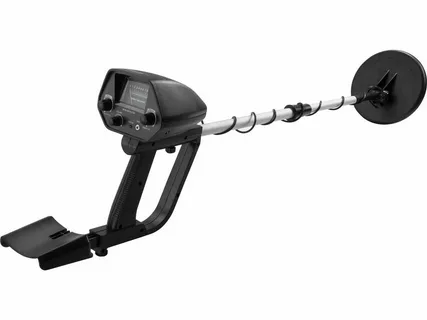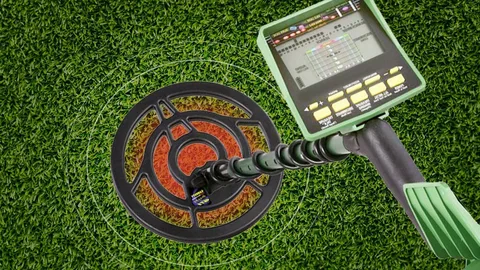Types of mining refer to the various methods and techniques used to extract valuable minerals and resources from the earth. There are a wide range of mining methods, each with its own advantages and disadvantages. Understanding the different types of mining is essential for anyone involved in the industry, as well as for those wanting to learn more about the process. In this comprehensive guide, we will explore the various types of mining, their applications, and the impact they have on the environment and society. Whether you are a student, a professional in the field, or simply curious about the mining industry, this guide aims to provide a thorough overview of the different types of mining.
The Different Types of Mining: A Comprehensive Guide provides a detailed look into various mining methods used worldwide. The guide covers surface mining, underground mining, placer mining, solution mining, and block caving, outlining the processes, equipment, and environmental impacts associated with each type. Additionally, the guide delves into the economic and social aspects of mining, as well as the future outlook for the industry. It serves as a valuable resource for anyone seeking a deeper understanding of the diverse approaches to extracting valuable minerals and resources from the earth.
An Introduction to Surface Mining and Its Environmental Impact

An Introduction to Surface Mining and Its Environmental Impact provides comprehensive information about the process of surface mining and its effects on the environment. The book covers the techniques and equipment used in surface mining, as well as the impact on land, water, and air. It also discusses regulations and best practices for mitigating environmental damage caused by surface mining. Written for students, professionals, and anyone interested in the topic, this book offers a thorough exploration of the subject matter.
The Process of Underground Mining and Its Challenges

Underground mining involves extracting minerals and ores that are located deep within the Earth's surface. The process typically involves creating a network of tunnels and shafts to access the resource. Challenges of underground mining include safety concerns, such as the risk of cave-ins, flooding, and exposure to harmful gases. The limited access to ventilation and natural light can also make underground mining a physically demanding and isolating environment for workers. Other challenges include the high cost of initial infrastructure development, as well as ongoing maintenance and safety measures required to prevent accidents and protect the well-being of workers. The environmental impact of underground mining, such as soil and water contamination, also presents challenges that need to be addressed and mitigated. Overall, underground mining requires careful planning, specialized equipment, and a strong emphasis on safety and environmental protection to overcome its unique challenges.
The Importance of Placer Mining in Extracting Valuable Minerals

Placer mining is an important method for extracting valuable minerals, particularly gold, from riverbeds and other sediment deposits. This type of mining involves using water to separate the minerals from their surrounding materials. It is a relatively simple and low-cost method, making it accessible to small-scale miners and prospectors. Placer mining has played a crucial role in the history of many gold rushes, as it allowed for rapid and widespread extraction of gold from the ground. The process typically involves using a pan, sluice box, or dredging equipment to separate the dense gold particles from the surrounding sediment. Today, placer mining continues to be an important method for extracting gold and other valuable minerals. While it may not be as efficient or large-scale as modern mining techniques, it still provides opportunities for small-scale miners and prospectors to find and extract valuable minerals. Additionally, placer mining can have less of an impact on the environment compared to other mining methods, as it does not require the same level of infrastructure or use of chemicals. Overall, placer mining remains an important and relevant method for extracting valuable minerals, particularly in areas where traditional mining techniques may not be feasible or economically viable.
Exploring the World of Open-Pit Mining and Its Economic Significance

Exploring the World of Open-Pit Mining and Its Economic Significance provides an in-depth look at the process of open-pit mining and its impact on the economy. This book delves into the techniques and technologies used in open-pit mining, as well as the economic factors that drive the industry. It also examines the environmental and social implications of open-pit mining and offers insights into the future of the industry. This comprehensive resource is suitable for students, professionals, and anyone interested in learning more about open-pit mining and its economic significance.
Understanding the Techniques of Hard Rock Mining and Its Applications
Hard rock mining is a method of extracting minerals and ores from the earth's crust through the use of heavy machinery and explosives. This technique is commonly used in the extraction of gold, silver, copper, and other valuable metals and minerals. The process of hard rock mining begins with the drilling of boreholes into the earth's surface. Explosives are then inserted into these boreholes and detonated to break up the rock and create fragments that can be easily removed. Once the rock has been broken up, it is transported to the surface for further processing. There are several different techniques used in hard rock mining, including underground mining, open-pit mining, and cut and fill mining. Each method has its own unique advantages and challenges, and the choice of technique depends on factors such as the depth of the ore body, the geological characteristics of the site, and environmental considerations. Hard rock mining has a wide range of applications beyond mineral extraction. It is also used in the construction of tunnels, dams, and other large-scale infrastructure projects. Additionally, the techniques and machinery developed for hard rock mining have applications in the oil and gas industry, as well as in the construction and civil engineering sectors. Overall, hard rock mining is a complex and challenging process that requires careful planning and precise execution. Understanding the various techniques and applications of hard rock mining is essential for ensuring the efficient and sustainable extraction of valuable resources from the earth's crust.
The Pros and Cons of Strip Mining for Natural Resource Extraction
Strip mining, also known as surface mining, involves the removal of large strips of rock and soil to access underlying mineral deposits. This method is commonly used for the extraction of coal, phosphate, and other natural resources. One of the main advantages of strip mining is its efficiency in extracting resources from large areas. It allows for the extraction of valuable materials that may be inaccessible through traditional underground mining techniques. Additionally, strip mining can lead to the creation of jobs in areas where the mining operations are taking place. However, strip mining also has significant drawbacks. It can cause extensive environmental damage, including the destruction of natural habitats and the contamination of water sources with pollutants from the mining process. The removal of large amounts of rock and soil can also result in erosion and landscape disruption. Furthermore, strip mining can have detrimental effects on local communities, including noise and air pollution, as well as the displacement of people from their homes and livelihoods. It can also lead to long-term environmental degradation, making it difficult for the land to be rehabilitated once mining operations cease. In conclusion, while strip mining can be an efficient method for extracting natural resources, it comes with significant environmental and social costs that need to be carefully weighed against its benefits.
The Role of Subsurface Mining in Accessing Deep-lying Deposits
Subsurface mining is a method used to access deep-lying mineral deposits that are not easily accessible through surface mining. This type of mining involves digging shafts and tunnels underground to reach the desired minerals, such as coal, gold, diamonds, and other precious metals and gemstones. Subsurface mining is often employed when the deposit is located at a significant depth below the surface, making it impractical or uneconomical to extract through surface mining methods. This method allows access to valuable resources that would otherwise remain unexploited due to their depth. However, subsurface mining poses significant challenges, including safety hazards for workers, environmental concerns, and potential impacts on local communities. Therefore, careful planning and management are crucial to mitigate these risks and ensure the responsible extraction of deep-lying deposits.
Examining the Advancements in Drift Mining and Its Safety Measures
Drift mining is a type of underground mining that utilizes horizontal tunnels to access mineral deposits. Over the years, there have been advancements in drift mining technology, such as the introduction of advanced machinery and automation to improve efficiency and safety measures. One significant advancement in drift mining safety is the development of monitoring systems that can detect hazardous gas levels, seismic activity, and other potential risks. These systems help to ensure the safety of miners by providing early warnings and allowing for quick evacuation if necessary. Furthermore, improvements in ventilation and dust control have also contributed to a safer drift mining environment. Proper airflow and dust suppression help to reduce the risk of respiratory problems and other health issues for miners. Training and education on safety procedures and the proper use of equipment have also been emphasized in the industry, leading to a better understanding of potential hazards and how to mitigate them. This focus on education has significantly contributed to a safer work environment for drift miners. Overall, the advancements in drift mining technology and safety measures have greatly improved the working conditions and reduced the risks associated with this mining method. However, continued research and innovation are essential to further enhance safety in drift mining operations.
The Evolution of Hydraulic Mining and Its Impact on the Environment
The evolution of hydraulic mining began in the 1850s and quickly became a popular method for extracting gold and other valuable minerals. This method involved using high-pressure water jets to dislodge and transport sediment, effectively allowing miners to access previously unreachable deposits. While hydraulic mining was incredibly effective in increasing mineral production, it also had significant negative impacts on the environment. One of the most notable impacts of hydraulic mining was the widespread destruction of natural landscapes. Large amounts of sediment and debris were washed downstream, causing extensive damage to rivers, valleys, and wildlife habitats. Additionally, the use of hydraulic mining resulted in the release of harmful toxins such as mercury and arsenic, which contaminated water sources and contributed to long-term environmental degradation. The environmental consequences of hydraulic mining prompted widespread criticism and ultimately led to the implementation of regulations to mitigate its impacts. In 1884, the Sawyer Decision in California effectively prohibited the dumping of mining debris into waterways, and in subsequent years, further legislation was enacted to restrict hydraulic mining practices. Despite its detrimental environmental effects, the evolution of hydraulic mining played a significant role in shaping the landscape of the American West and in driving economic development during the 19th century. However, the legacy of environmental damage caused by this mining technique serves as a sobering reminder of the importance of sustainable and responsible resource extraction practices.
Assessing the Future of In-situ Mining for Resource Extraction Innovation
See also: Uncovering the Hidden Treasures of Black Sand Gold
Assessing the future of in-situ mining for resource extraction innovation involves evaluating the potential of in-situ mining as a sustainable and cost-effective method for extracting resources such as oil, gas, and minerals. This assessment requires a thorough examination of the environmental, economic, and technological factors that may impact the viability and effectiveness of in-situ mining. It also involves analyzing the potential benefits and drawbacks of this extraction method compared to traditional mining techniques. Additionally, assessing the future of in-situ mining requires taking into consideration the latest advancements in technology and their potential impact on the industry. Overall, the assessment aims to provide insights into the future prospects of in-situ mining for resource extraction innovation.
In conclusion, this comprehensive guide has provided a thorough overview of the different types of mining, including surface mining, underground mining, and in-situ mining. Each type has its own unique processes, equipment, and environmental impacts, making it crucial for mining companies to carefully consider the best approach for their specific needs. Whether it be extracting minerals from the earth's surface, tunnelling deep underground, or leaching minerals in place, understanding the different types of mining is essential for the sustainable and responsible extraction of natural resources.
See also: Find Your Next Gold Detector Online: Top 5 Choices
